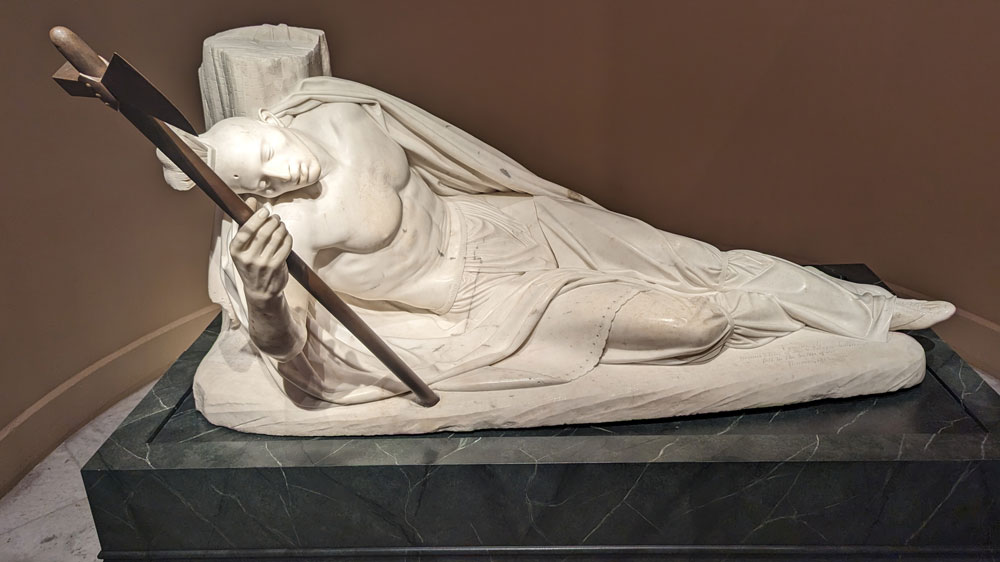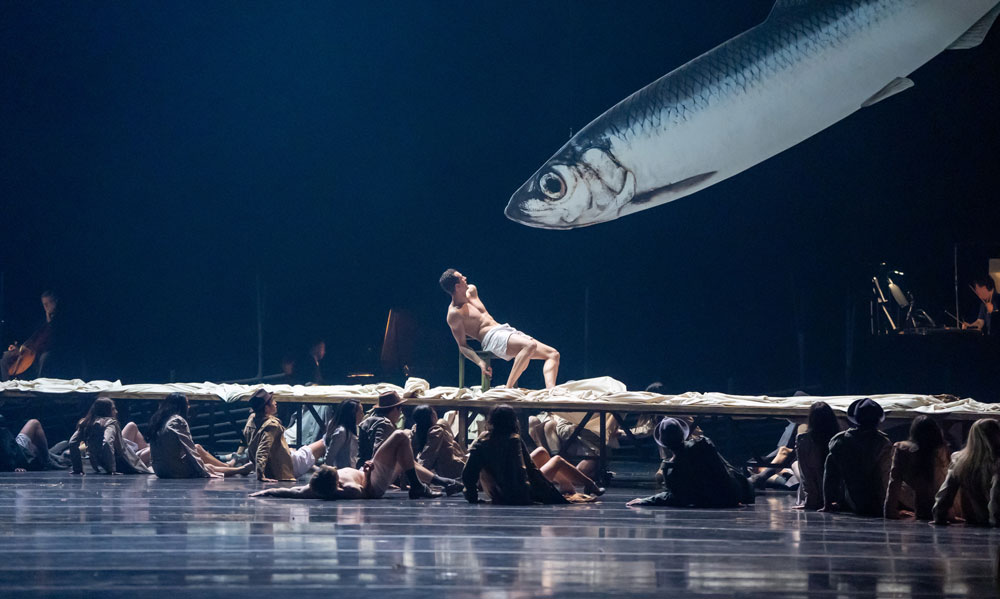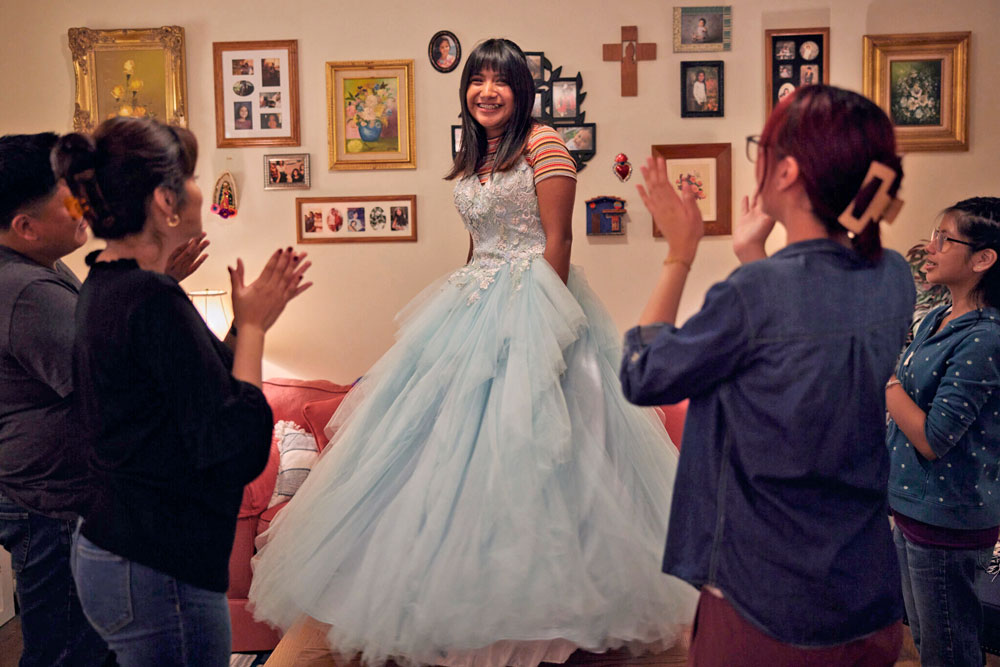
In today’s charged socio-political climate, who we consider an immigrant often depends on perspective. Outlooks that are often weighted in judgment. But an immigrant is simply someone who’s living in a country other than the one they were born. That makes the 102 people who arrived on the Mayflower immigrants to a land that would become one of the most coveted nations on the globe. Since that fateful arrival in 1610, these shores have become and continue to be an unfaltering magnet powered by hope. Not only to those pursuing dreams and aspirations; but also to those fleeing hardship and oppression. Their stories have been chronicled in books and on film, but rarely have we had the opportunity to walk in the shoes of individuals and families who’ve left their home to build new lives in this country. A novel concept emanating from one of Chicago’s most diverse neighborhoods is changing that. Port of Entry, a theatrical experience originally conceived just before the onslaught of the Covid pandemic, does more than give us a better feel for who today’s immigrants are. It offers the chance to grasp what it is to begin a new life in a foreign land.
Co-created by Albany Park Theater Project (APTP) and Third Rail Projects, Port of Entry could be considered theater taken to the next level. One where the audience is invited into the production to participate as well as to watch. It’s a dynamic that makes investment unavoidable and concentrated focus a natural response.
Before embarking on this journey, we watch as people, often alone; enter under low light from a side door. They then climb a few stairs and disappear into an empty void. It’s a long staggered procession marked by its solemnity and its silence. Broken up into four groups and led by a guide, the audience then follows them.

Some crossover exists, but each group is destined to enter the lives and homes of people representing the ethnically varied procession it witnessed. Port of Entry’s current location represents new space for the production; allowing it to better accommodate the impressive scale it needs to realize its vision. Sets are individual apartments, some tiny, some spacious and all painstakingly detailed. Each audience pod steps into lives at various stages of becoming rooted in their new country. The first is so new, the occupants have yet to arrive at their new apartment. Anticipating that arrival, the group is asked to get the apartment ready by folding sheets, organizing government questionnaires and putting away groceries. Only a small clutch of youngsters eventually come in. Hesitant, excited and curious, they ask through gestures and limited English what things like microwaves and Kraft mac & cheese are and how to uses them. It’s a good way to see the size of the mountain. Small glimpses into the traditions they’ve brought with them are shared before a neighbor knocks on the door and invites us to follow her to a different immigrant reality.
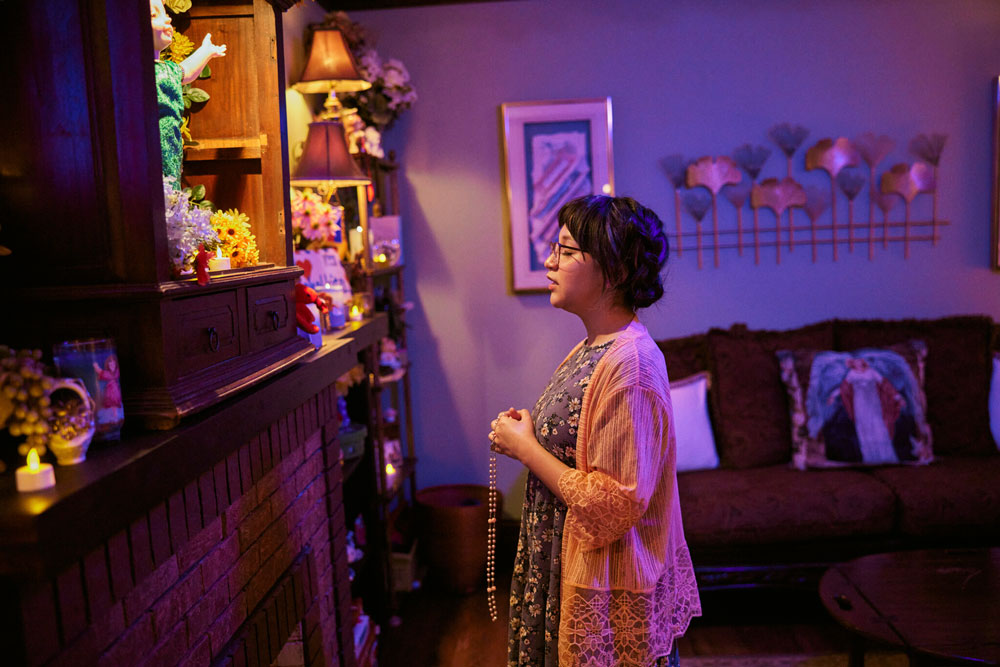
These handoffs become the links that lead from one experience to the next. Occasionally only one person may be asked to follow someone who’ll introduce them to a different take on what constitutes assimilation. Or teach them what sports pleasure could not be left in the one’s former home. APTP’s youth ensemble makes up a large part of the cast. When a teenager extols the wonders of playing cricket before leading you to a back porch where you reconnect with your group, you gain fresh appreciations. One for a child’s dedication to what they love and another for the small prices and large sacrifices people make to emigrate.
Experiences in each home can vary in length and depth. The Filipino household was one of the longest and one of the most interesting encounters; primarily because of the lush visual stimulation and because the matriarch provided such abundant information about her home culture. Ephemera specialists work with set designers to ensure cultural accuracy. That authenticity, and exposure to the lingering costs of leaving one country for another, enable audiences to forge a psychological connection to others in struggle.
Meticulously orchestrated and incorporating music as well as sophisticated technology to travel time and entrench place, the mechanics that make Port Entry work converge with startling precision.
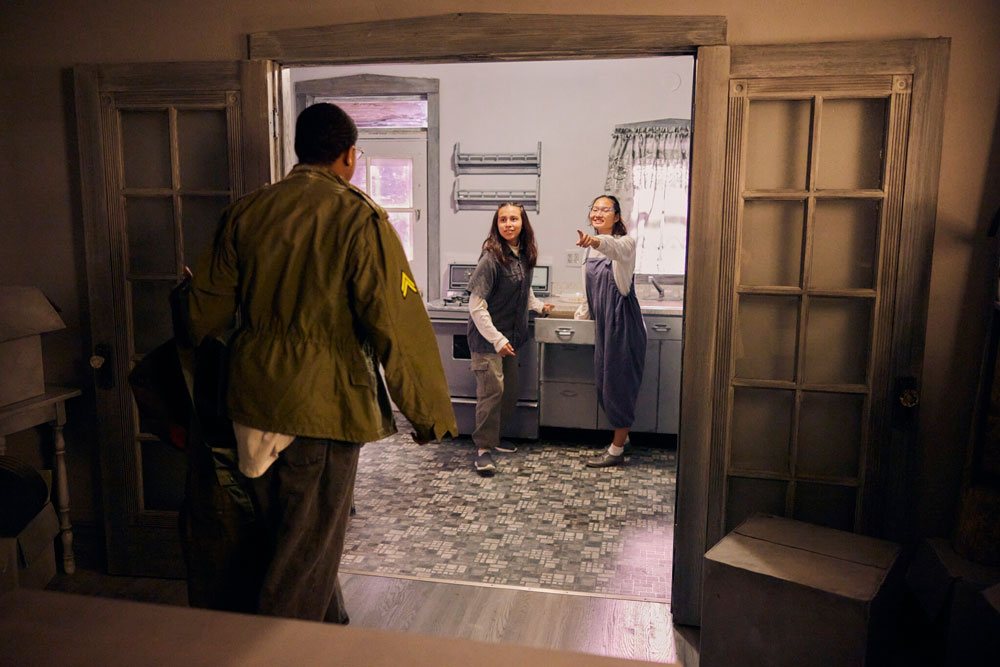
The show’s creative team hopes to make Port of Entry a staple in Chicago’s list of must-see tourist destinations. As it’s currently structured, the play’s well-designed to serve that purpose. There’s nothing else like it in the city’s entertainment universe and both its immediate and residual impact are tremendous. Even Chicagoans will and have been walking away with a renewed respect for the variety of people needed to make a metropolis and a nation thrive.
A brief hiatus starting mid-month will allow the creative forces driving the production to re-tool and refine the plays within the play. By the time Port of Entry resumes performances in March 2024, areas of ambiguity such as the dining room scene in the Filipino household will likely have been addressed. It’s also hoped that immigrant stories from as many continents as possible are represented. That inclusivity will only add to the vitality of an already rich theatrical effort.
Port of Entry
Fall Performances End December 16th, 2023
Albany Park Theater Project
3547 W. Montrose Ave.
Tickets: Wait List only
For more info: 773-866-0875

